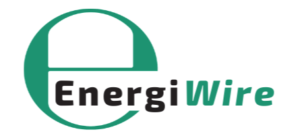____________________________
Decentralized finance, or DeFi, can be defined as financial systems that are enabled by blockchain tech. Here, blockchain networks aim to eliminate the need for intermediaries such as central banks and other financial institutions. The technology used to facilitate DeFi transactions can be used to provide a range of financial services in addition to the borrowing and lending of cryptocurrencies.
Several DeFi platforms use smart contracts to facilitate transactions, and there are several ways to gain exposure to cryptocurrencies operating in the DeFi space.
You can buy and hold cryptocurrencies, which can then be lent on a DeFi platform to earn interest. Generally, you earn a higher interest rate if the lending period is for a longer duration, and vice versa.
Let’s take a look at three such cryptocurrencies operating in the DeFi segment.
Uniswap
Valued at a market cap of US$4.1 billion, Uniswap (CRYPTO:UNI) is the 22nd-largest cryptocurrency in the world. Uniswap is also one of the most popular decentralized trading protocols and is known to facilitate the trading of DeFi tokens.
Launched in late 2018, Uniswap is an automated market maker and has gained on the back of a rapidly expanding DeFi market.
Uniswap aims to improve efficiency by resolving liquidity issues with its suite of solutions and avoiding problems that impacted decentralized platforms initially. Towards the end of 2020, Uniswap launched UNI, which is a governance token. The UNI token is currently priced at $5.72, which is 80% below all-time highs.
The total value locked on the Uniswap platform is around US$6 billion, and it has already facilitated billions of dollars in trades.
Aave
Launched in early 2020, Aave (CRYPTO:AAVE) has total value locked on the DeFi platform of US$8.92 billion. At the time of writing, the AAVE token is trading at US$119, indicating a market cap of US$1.65 billion for the cryptocurrency.
A decentralized finance protocol, Aave allows people to lend and borrow several cryptocurrencies. Here, you can earn interest by depositing cryptocurrencies in liquidity pools. Alternatively, borrowers use digital assets as collateral, which is used to increase their liquidity position.
You can lend and borrow around 20 cryptocurrencies on Aave, making it attractive to those looking to derive a stable income stream in the crypto world. Aave was also the first to introduce the concept of flash loans, which is an uncollateralized loan option.
Curve
The final DeFi protocol on my list is Curve (CRYPTO:CRV), which was launched in January 2020. In August 2020, Curve also launched a DAO (decentralized autonomous organization) with an in-house token called CRV. Curve leverages an Ethereum-based creation tool in order to integrate smart contracts related to user deposits.
Decentralized tokens have gained popularity as they provide an opportunity to benefit from attractive yields. In fact, users can derive double-digit yields by providing liquidity and facilitating trades between cryptocurrencies with lower trading volumes.
Curve charges a fee of 0.04% to facilitate trading. It shares 50% of its fees with liquidity providers. So, if the trading volume is $10 billion, around $2 million in fees will be shared among developers and liquidity providers.

